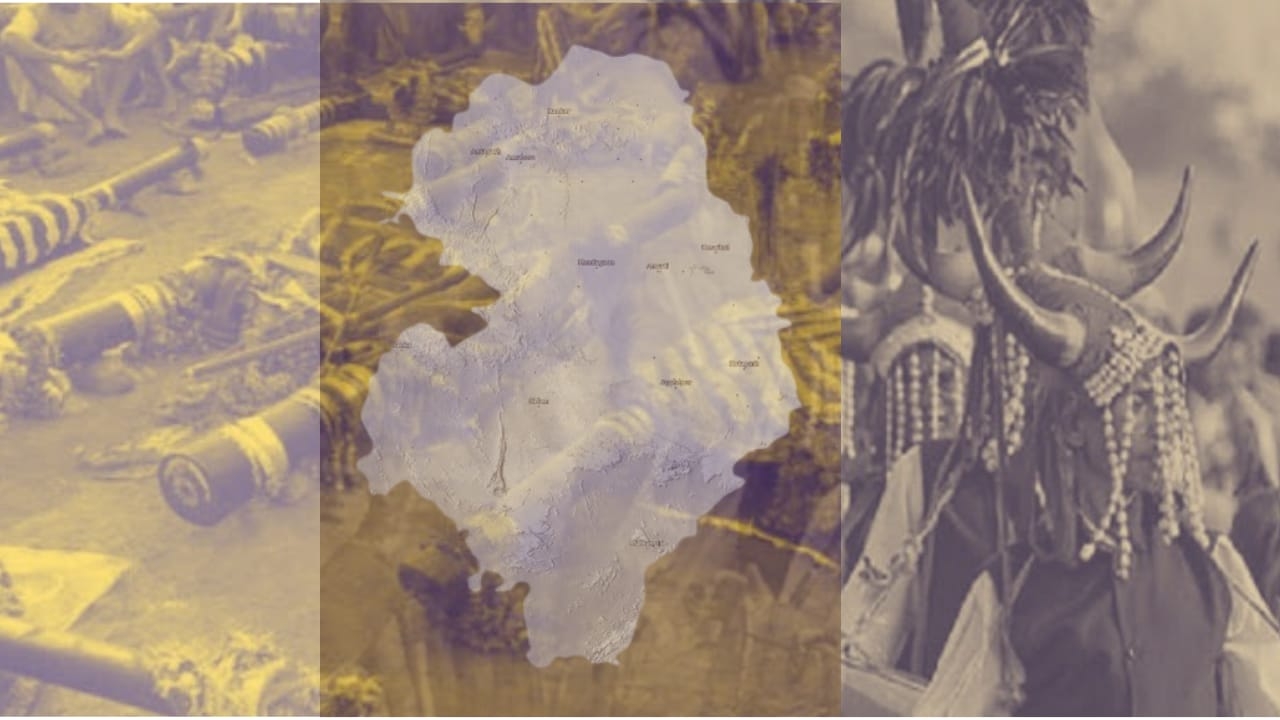Bastar and Tribal Community (Part 1) - Historical Aspects and Present Situation
We will be attempting to inform the people about Bastar, its citizens, cultures, and the unsung leaders who helped the exploited people of Bastar while citing the book Bastar ke Jannayak by author Rajeev Ranjan Prasad, a citizen who shares the first-hand experience of Bastar.

Bastar, a district and a divisional area of Chhattisgarh is well-known for its scenic waterfalls, deep forests, and centuries-old tribes with wealthy culture. Popularly known as the cultural capital of the state, mentions of Bastar have been recorded in the religious/history books of Ramayana and Mahabharata.
A land with such a rich history has various tales and theories for its name’s origin. Some theories include a king whose name was ‘Vastar’ based on whom the region’s name ended up being Bastar, another being the land is so vast that vistar (expansion for Hindi) became Bastar; when Ravan had abducted Sita, she threw pieces of her cloth on the ground, the clothes or vastra, were referenced while naming the area Bastar, when King Annamdev and his troops were resting under Bamboo trees, also called Bastari, the area became popular as Bastar. Before Bastar, it is noted that the region was also called Dandakaranya, Stree Rajya, Mahakantar, Kantar, Chakrakot and many others.
Once upon a time, the Bastar district was among the largest districts in India. After independence, two regions of Chhattisgarh, Bastar and Kanker were merged into one. Today the total area has been divided into seven different districts, namely Kanker, Narayanpur, Kondagaon, Bijapur, Dantewada, Bastar and Sukma.
Now considered the largest division in terms of area in Chhattisgarh, the Bastar division is bigger than the states of Kerala, Goa, Delhi, and many North-east states of the country. It is even larger than countries like Belgium, Denmark, Israel, and Switzerland.
The tribals of Bastar have a unique mixed culture and have been present since the ancient times, wherein some still practice the exact same customs and traditions. Yet very little effort has been invested in knowing and preserving their culture.
We will be attempting to inform the people about Bastar, its citizens, cultures, and the unsung leaders who helped the exploited people of Bastar while citing the book Bastar ke Jannayak by author Rajeev Ranjan Prasad, a citizen who shares the first-hand experience of Bastar.
While comparing the earliest Bastar and the present Bastar, ancient books of Hinduism like Valmiki’s Ramayana, Mahabharata, Vayu Puran, Matsya Puran, Vamana Puran, Uttar Ramcharitmanas, and many more are referred to; Within these books, it can see that the list of visitors in the lands since the ancient times is very long.
During the Ramayana times, the region was famous as Dandakaranya, which was said to be a forest of Punishment, where deities, as well as asurs, reside together. Lord Rama, Sita, and Lakshaman had travelled from afar to reach Bastar and spent their exile in this forest.
Many events of the Ramayana take place in Dandakaranya or Dakshin Kosal region, including Rama eating berries given by Shabri, who had innocently tasted all the berries so her God would not have to eat the sour ones.
During the Mahabharata times, the region was famous as Dakshin Kosal as in ancient times it was a part of the Kosal Kingdom. It is also stated that the Lakshagraha (house of lac) where the Kauravas planned the Pandavas' assassination was also apparently situated here.
The books note that after the Mahabharata war, the Pandavas' successors occupied the Chhattisgarh region and ruled over it. Some books also note that after Mahabharata for many years women had ruled the region for all men had died in the war.
Ancient Bastar is also described in the writings of Hiuen Tsang, a Chinese Buddhist monk who had travelled to India to attain knowledge of Buddhist scriptures. In his books, he mentions a cursed area which was turned into a vast forest, this story relates to a cursed kingdom mentioned in Ramayana, where King Dand’s kingdom was cursed by Shukracharya to no longer be a people’s land and instead turned into dense forest.
Tsang also mentions that after travelling 900 miles in the forests one will reach Andhra Pradesh where nature is warm and people are brave. The syntax and language are also different from those in central India. In Hiuen's stories, Bastar is the connecting forest which acts as a link for different states.
After the ancient times, the land, and its people or more specifically the tribes have witnessed various revolutions, and changes in kingdoms, and empires. Today, the tribes of Bastar make more than 60 percent of the total Bastar population and more than 30 percent of the total tribal population of Chhattisgarh. Some of the tribes included in this population count are Abhujmadia, Maria, Muria, Bhatra, Halba, Dorla, Gond etc.
These ferocious tribes are selective in choosing their leaders. In the past, the people who lent them an ear and supported them were favored whereas those who exploited them were overthrown. Many kings of the ruling monarchy of Nal, Gang, Naga (Nagvanshi), and Kakatiyas etcetera had the misfortune of witnessing this whereas many leaders who had supported the tribes were made kings in the same dynasty.
In modern times, the importance of the tribes and their history are now being recognized by the country. The indigenous people of the nation are given rights and reforms, their art is being recognized however with so many transformations witnessed by the country, a big part of our history is lost.
A noteworthy indication given by the author of the book is that the history and information about the ancient Bastar should be looked into before it is too late and everything is modernized.


